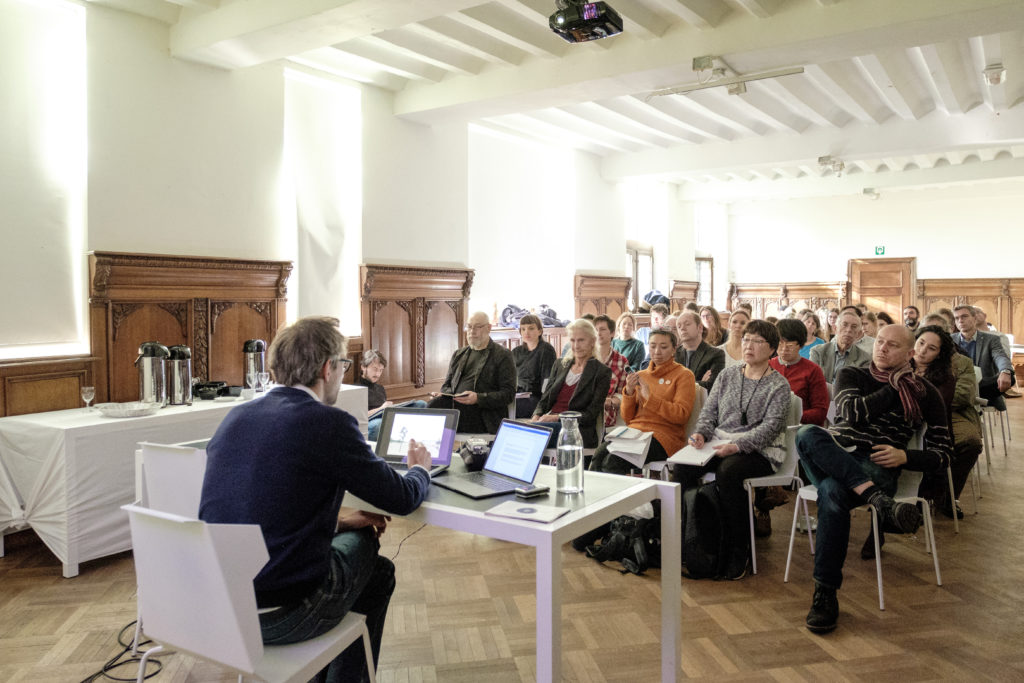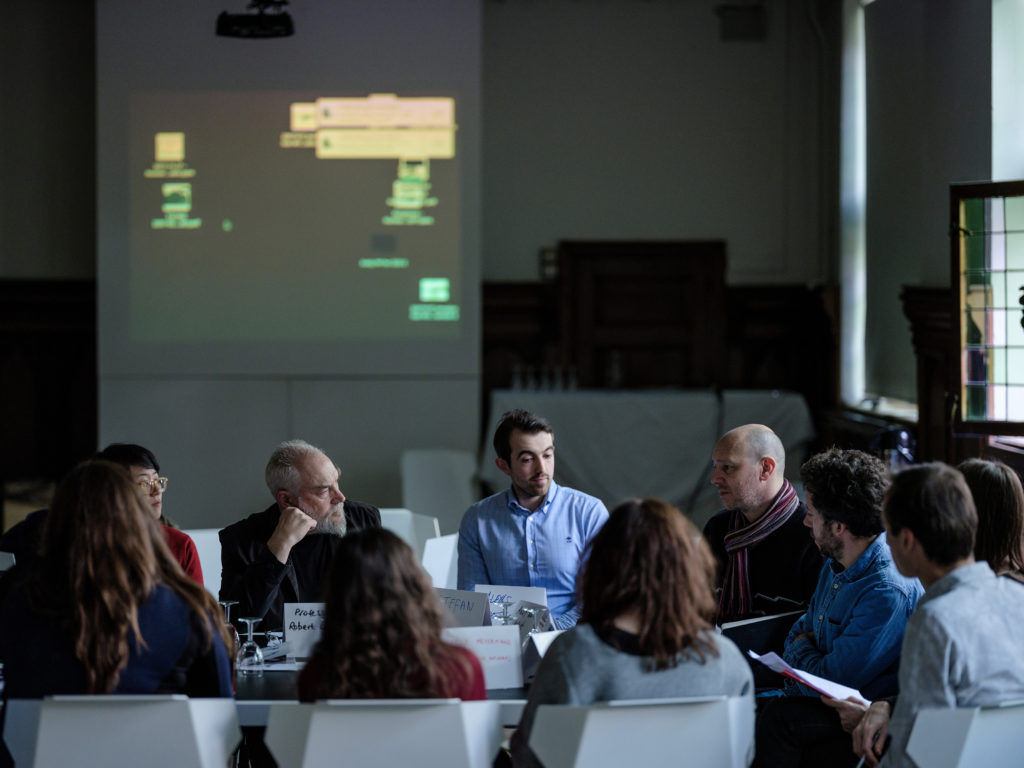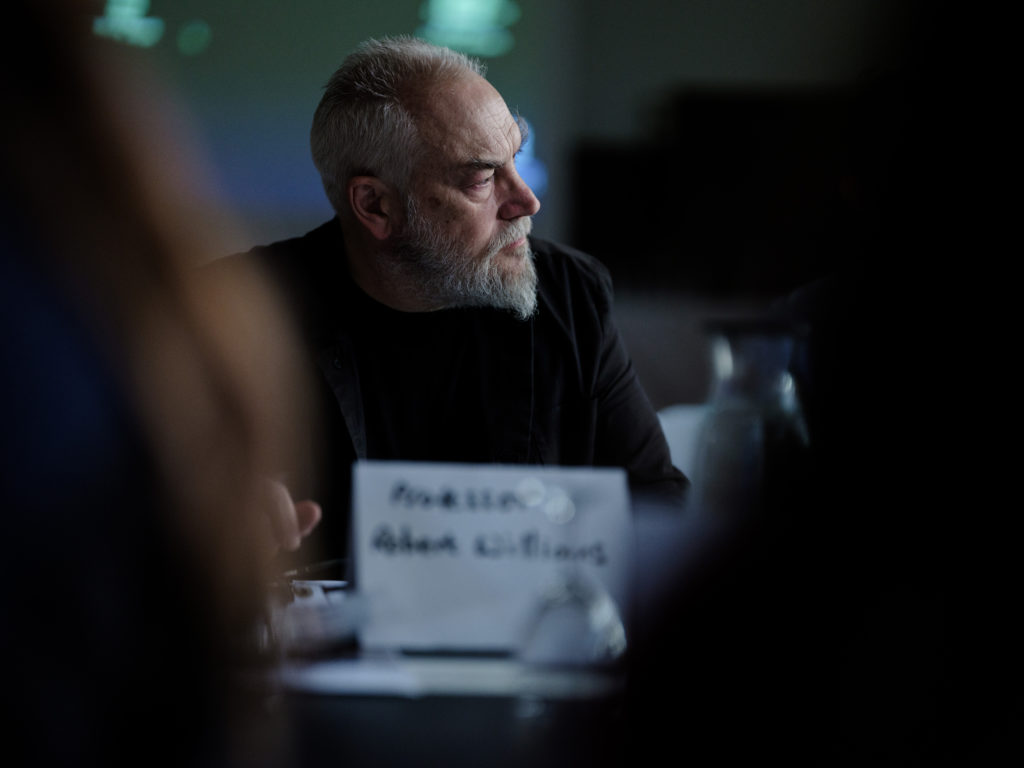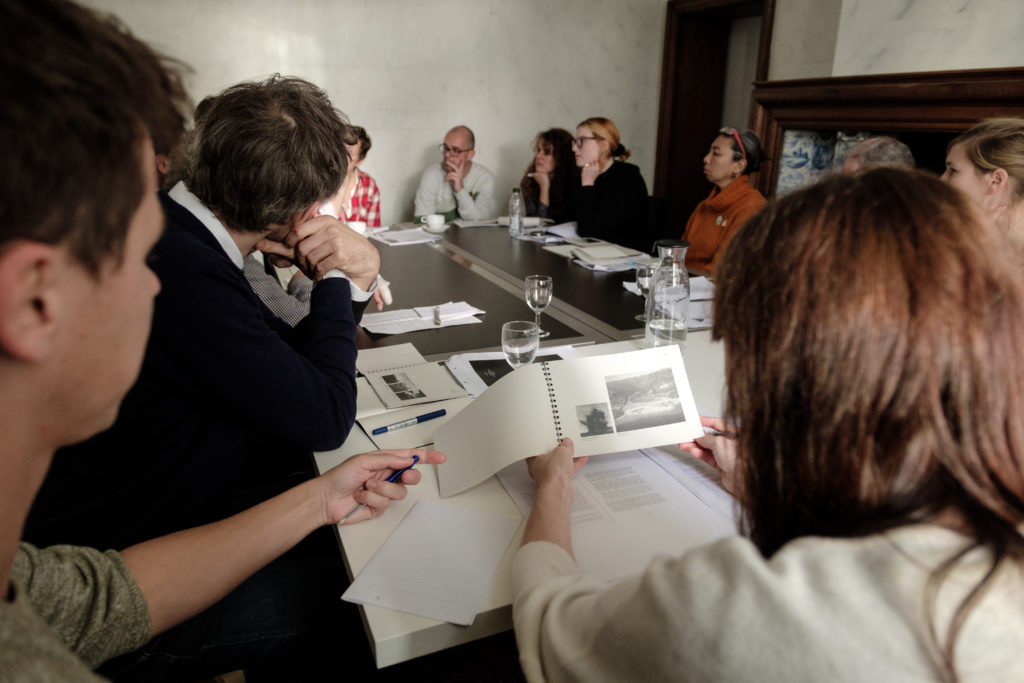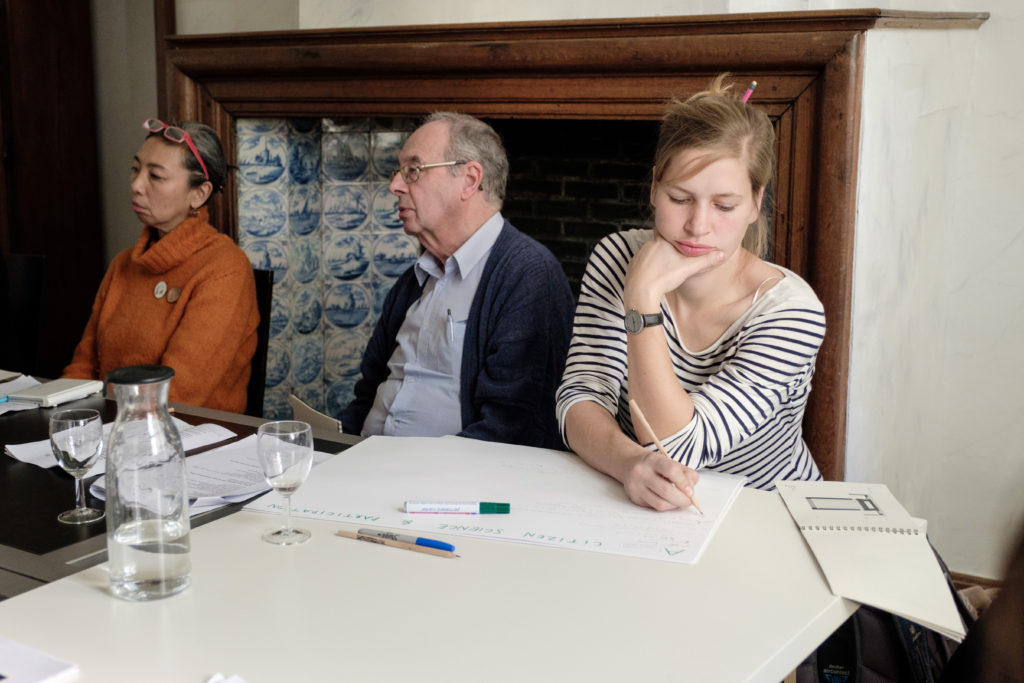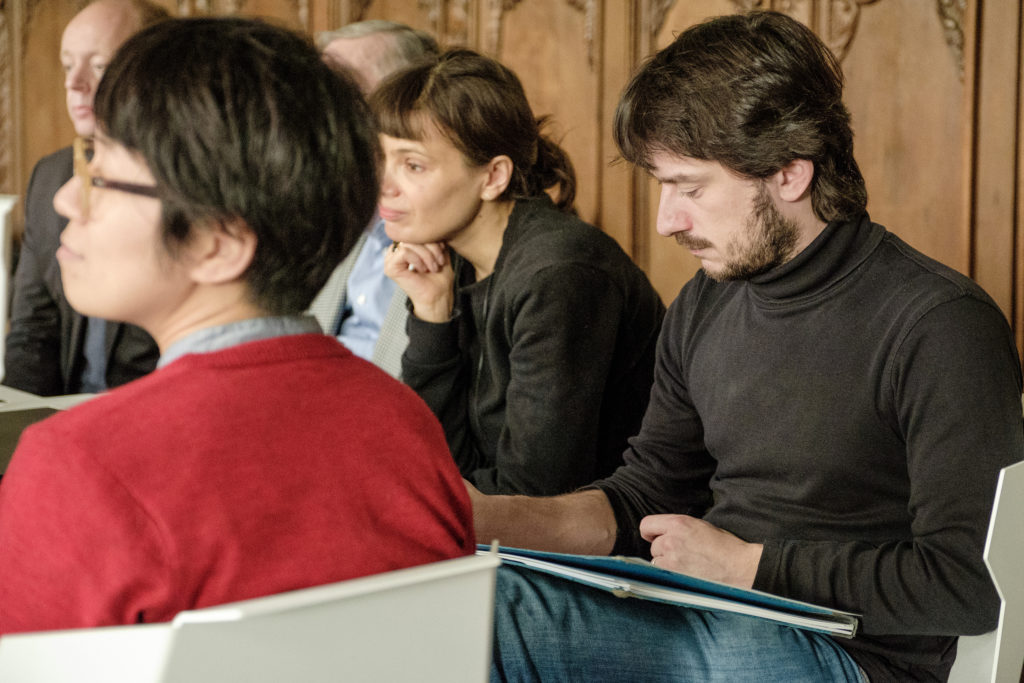Underground / Overground.
Roundtable on Art and Radioactive Waste Storage in Belgium
On November 17 last year, the seventh Nuclear Culture Roundtable took place at Z33, a day of debates accompanying the exhibition Perpetual Uncertainty. What exactly is nuclear culture, and what’s the origin of the Nuclear Culture Roundtable?
Man-made nuclear fission products will last for up to one million years. Warning messages at nuclear repositories need to last more than 100,000 years, about 4,000 generations. What does this mean in human terms? About 100,000 years ago, Europe was populated by a different species of human, Homo neanderthalensis. We know they had ape-like facial features, and used basic hunting tools, but we have no knowledge of the language they used.
What will humans be like in 100,000 years? What will be the dominant species? How will they think? Will they understand our languages? How to prevent future civilisations from disturbing a nuclear waste repository, and how to ensure their safety? What signs, language and solutions can we use to talk to our future selves? And what should be the message’s content? Do we actually have a language to speak about deep time? How to extend the lifespan of our digital data? Can we keep the memory of nuclear sites alive so that they can be managed in perpetuity, and how can artists be involved in this process?

Enough food for thought to organise a ‘Nuclear Culture Roundtable’ day to discuss the less tangible, more philosophical, ethical and social questions around radioactive waste storage in Belgium. The event took place on November 17 last year, and was organised by Z33 research to accompany the exhibition ‘Perpetual Uncertainty’ curated by Ele Carpenter.
The roundtable is part of a series of Nuclear Culture Round Tables worldwide, bringing together experiences and approaches from artists, architects, philosophers, sociologists along with nuclear agencies, scientists, stakeholders and NGO’s. These roundtables aim to cross the fields, break down artificial mental barriers, include a wider range of perspectives to incite a cultural debate on nuclear issues.
The Round Table events are inspired by the legacy of artist James Acord, the atypical student of nuclear science, and the only individual in the United States to receive a Radioactive Materials License (so pleased was Acord that he had the license number tattooed onto the back of his neck). Acord built the first roundtable in his Hanford studio (USA) in the nineties, bringing together nuclear engineers and environmentalists to discuss how to clean up the nuclear weapons Hanford site.

Nuclear culture itself can be defined as “the complex and varied ways in which people control, respond to, resist, and represent the complex influence of nuclear science and technology” (2016, J.Hogg). Since the beginning of the 21st century, the nuclear industry is turning more and more towards the humanities to explore the conceptual, ethical and social processes needed to make decisions on siting, monitoring, marking and archiving geological repositories for long-lived radioactive waste.
The roundtable on November 17 included artists participating in the Z33 Nuclear Culture programme, researchers and stakeholders from the Belgian Nuclear Waste Management project, artists from the ANDRA art programme, researchers on MODERN 2020, and students.
For a more thorough reflection on the topics that were explored during the day, we are happy to refer you to Ele Carpenter’s report of the day, illustrated by Pieter Fannes’ drawings.
